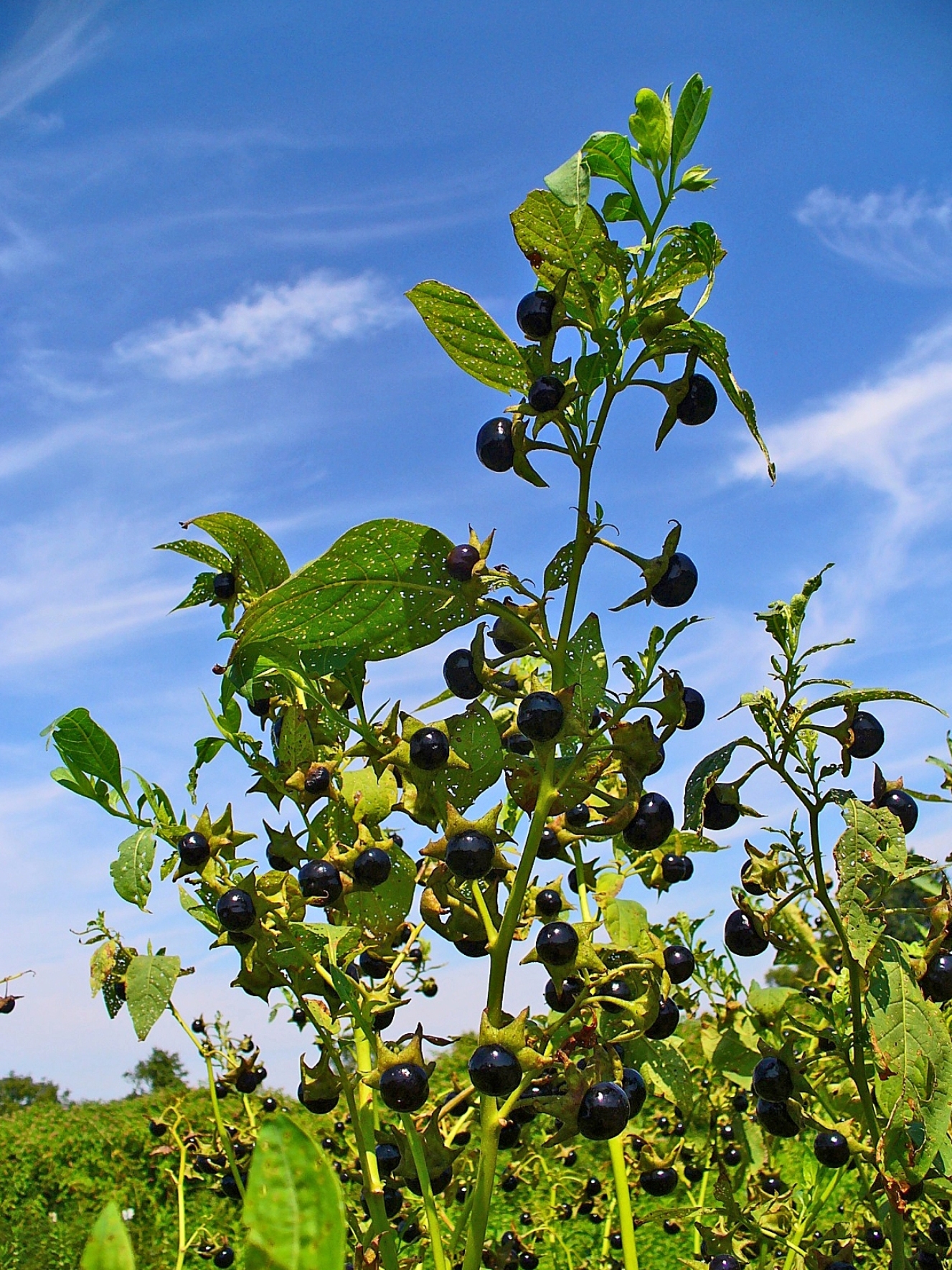Habitat
Atropa belladonna is native to Europe but is also commonly found in the North African and Eurasian parts of the world. Belladonna is most commonly distributed in the Central and Southern part of Europe. In Europe the plant is commonly seen growing among ruins and in waste places. The plant can be found growing in limestone, chalky and calcareous soils, which means that the pH is below 7 and thus the environment is slightly alkaline. The best growth also occurs in soils which have been recently cultivated or dug up. Belladonna is commonly found growing in damp, moist areas that do not receive a lot of sunshine, like under the shade of trees and on wooded hills. Growth is even found to be stunted if the plant is exposed to too much sunshine. This is partly due to the fact that the sunlight better attracts the insects that feed on the plant which increases the predation of the plant. This plant is cultivated in Central Europe, including England, the United States and Northern India. The plant is cultivated for the medicinal properties.
To learn more about other uses of Atropa belladonna go to the Facts page using this hyperlink.
Some other organisms that live with Atropa belladonna include snails, slugs and various insects, including the flea beetle which feeds specifically on this plants leaves. Belladonna also lives near other larger wooded plants in order to use them for shade. Various birds and other small herbivorous animals like rabbits also interact with the plant by eating the berries and dispersing the seeds for further spread of the plants. Although the toxin, which is least concentrated in the berries, still accumulates in the flesh of the animal that ate the berries. Other animals can be harmed by eating the plant. Any humans or animals that eat these animals that eat belladonna are likely to suffer the harmful effects of the toxin due to the presence inside the herbivores. Belladonna also grows well in recently cultivated soils, meaning that it grows best without other small shrubs for competition. This plant can be seen invading recently tilled farmland and would be wise to keep any livestock away from the plant.
To learn more about Atropa belladonna's interactions with other organisms see the Interactions page using this hyperlink.
If you wish to go back to the Home Page follow the hyperlink here.

